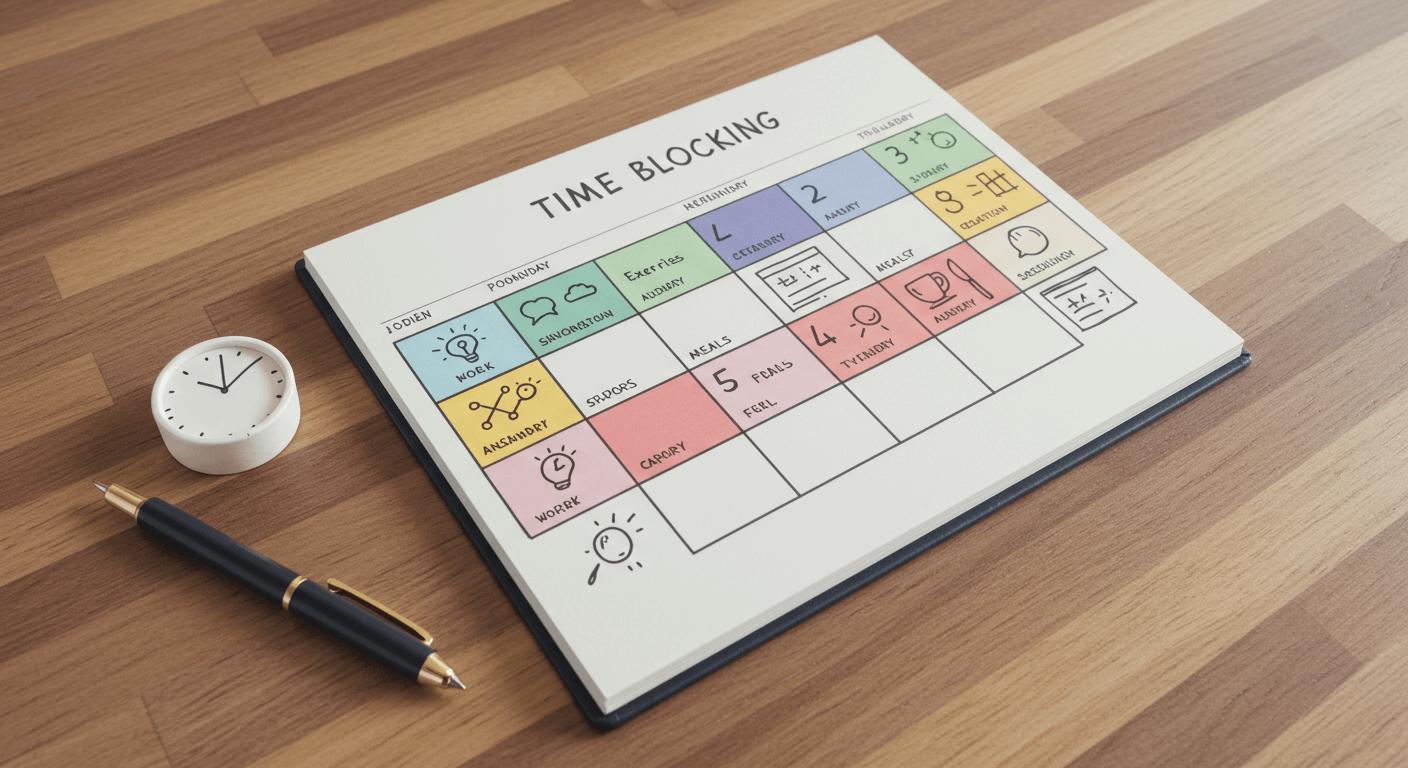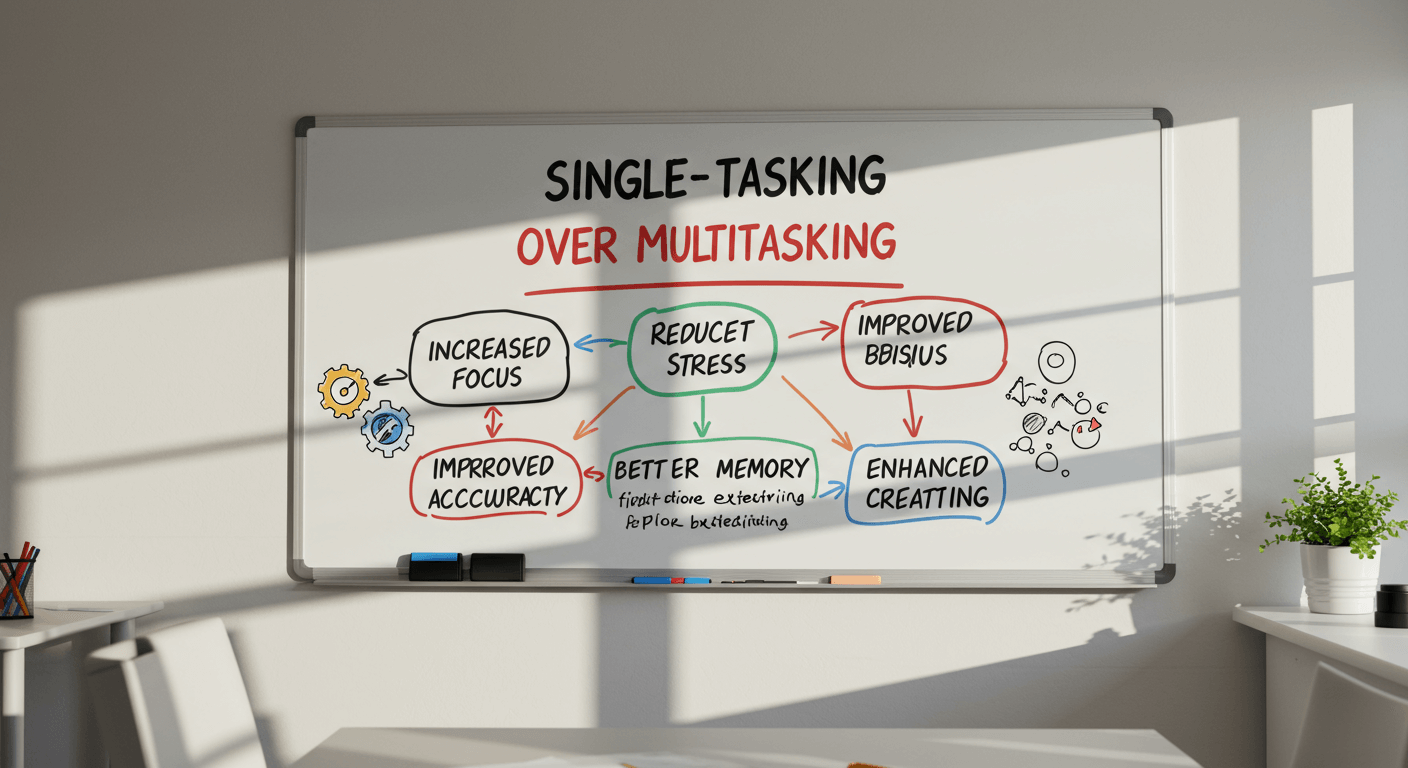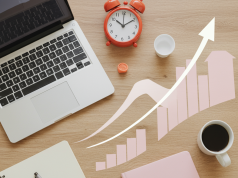Time Blocking

Time blocking involves dividing your day into dedicated segments that focus on specific tasks or project components. By assigning start and end times for each activity, you minimize distractions and decision fatigue throughout the day. Start by mapping out your top three priorities in the morning and allocate solid 60- to 90-minute blocks for deep work. Around each block, schedule short breaks to recharge. Over time, you’ll notice higher focus levels, fewer interruptions, and a stronger sense of accomplishment when you complete each segment on schedule. Learn more about 13 Revolutionary Productivity & Life Hacks to Level Up Your Day
The Two-Minute Rule
Inspired by David Allen’s Getting Things Done, the Two-Minute Rule states that if a task takes less than two minutes to complete, you should do it immediately. Whether it’s replying to a quick email, filing a document, or updating your calendar, handling these micro-tasks on the spot prevents small items from accumulating and overwhelming your to-do list. Adopting this rule can free cognitive bandwidth for more demanding projects and reduce the mental clutter that often slows productivity over time.
Batch Processing
Batch processing groups similar tasks together to leverage cognitive momentum and reduce context switching. Instead of scattering email checks throughout the day, designate two or three fixed intervals for inbox zero. Apply the same principle to phone calls, data entry, or social media updates. By consolidating related tasks, you avoid the productivity tax associated with constantly shifting gears. This approach also offers predictable windows of downtime between batches, allowing you to plan deeper creative or strategic work when you’re at your mental peak.
Eat the Frog
Coined by Brian Tracy, “eat the frog” means tackling your most challenging or important task first thing each morning. By completing the most dreaded assignment early, you eliminate procrastination and build momentum for the rest of the day. Whether it’s drafting a critical report, preparing a presentation, or negotiating a deal, getting it out of the way creates a sense of relief and accomplishment. This habit also reinforces discipline and resilience, helping you face complex tasks head-on rather than delaying them until energy levels wane.
Pomodoro Technique
The Pomodoro Technique breaks work into 25-minute intervals followed by a five-minute break. After four cycles, take a longer 15- to 30-minute pause. This rhythm capitalizes on the brain’s natural attention span and prevents mental fatigue. Use a timer or a dedicated app to maintain consistency. During each focus sprint, eliminate distractions by muting notifications and closing irrelevant tabs. Short, structured breaks allow you to stretch, refuel, and reset your focus for the next round, leading to sustained productivity throughout the day.
Mindful Mornings
How you start your day sets the tone for everything that follows. Implement a mindful morning routine that includes gentle stretching, deep breathing, or a brief journaling session. Avoid immediately reaching for your phone or diving into emails. Instead, spend five to ten minutes reflecting on your top priorities, practicing gratitude, or reviewing your schedule. This intentional pause creates mental clarity and equips you to tackle challenges with composure and focus as soon as you step into your workspace.
Single-Tasking Over Multitasking

Despite popular belief, multitasking often reduces overall efficiency by splitting attention. Research shows that our brains perform best when concentrating on one task at a time. Commit to single-tasking by closing comms channels and setting clear goals for each work session. When you notice your mind wandering or the urge to flip tasks arises, refocus on your current objective. Single-tasking not only speeds up completion time but also enhances the quality and accuracy of your work, ultimately producing better outcomes with fewer mistakes.
Digital Declutter
A cluttered digital environment can be just as distracting as a messy desk. Regularly organize your files, delete or archive old documents, and streamline folder structures to locate what you need instantly. Use tools like desktop cleaners, email filters, and bookmark managers to keep your digital workspace tidy. A minimalist inbox, clear folder hierarchy, and optimized app dock help you focus on tasks instead of hunting for resources, ultimately saving precious minutes each day and reducing decision fatigue.
Automate Repetitive Tasks
Leverage automation tools to handle repetitive or rule-based activities. Whether it’s setting up email autoresponders, building macros in spreadsheets, or integrating apps via Zapier or IFTTT, automating mundane tasks frees up mental capacity for higher-value work. Start by identifying time-consuming chores that occur daily or weekly, then explore no-code solutions or simple scripts to manage them. Over time, these small automations can save hours each month, allowing you to focus on core objectives and creative problem solving.
Master Keyboard Shortcuts
Learning keyboard shortcuts for your most-used applications can drastically cut down navigation and formatting time. Common shortcuts for copying, pasting, undoing, and switching between windows should become second nature. Invest ten minutes a week to memorize new commands, and practice them until they become muscle memory. This small investment yields exponential time savings over weeks and months, especially if your role involves heavy document editing, data entry, or multiple app usage simultaneously.
Leverage Productivity Apps
From task managers like Todoist and Trello to focus apps like Forest and Focus@Will, there is a wealth of digital tools designed to enhance productivity. Choose one or two that align with your workflow rather than juggling too many. Use them consistently to track deadlines, update progress, and collaborate with teammates. A centralized system prevents tasks from slipping through the cracks and offers an at-a-glance view of upcoming commitments, ensuring you always know what to tackle next.
Set SMART Goals
SMART stands for Specific, Measurable, Achievable, Relevant, and Time-bound. Applying this framework to your objectives clarifies what success looks like and establishes firm accountability. Instead of a vague goal like “improve marketing results,” set a SMART goal to “increase newsletter click-through rate by 15 percent within three months.” This targeted approach helps you break large ambitions into manageable milestones and track progress with concrete metrics.
Delegate and Outsource
You don’t have to do everything yourself. Recognize tasks that others on your team or external freelancers can handle efficiently. Delegating non-core activities such as research, data entry, or basic design not only frees up your schedule but also empowers collaborators to develop new skills. Provide clear instructions, define expected outcomes, and set realistic deadlines. Effective delegation fosters a culture of trust and collaboration while enabling you to focus on high-impact responsibilities that truly require your expertise.
Establish Routines
Consistent routines reduce decision fatigue by automating small choices throughout your day. Create a morning routine for planning and goal setting, an afternoon ritual for sustained focus, and an evening wind-down to reflect on achievements. Routines anchor your schedule and create predictable patterns that promote efficiency. Over time, these habits become second nature, allowing you to move from one part of your day to the next with minimal friction and maximum momentum.
Take Strategic Breaks
Working non-stop is counterproductive. Schedule brief breaks throughout your day to step away from screens and recharge. Use this time for a short walk, light stretching, or a mindfulness exercise. Strategic breaks boost creativity, lower stress levels, and improve long-term focus. Aim for a five-minute pause every hour or a longer 15-minute break every two to three hours. This practice helps reset your mind and body so you return to work with renewed energy and sharper concentration.
Reflect and Review
End each week with a brief reflection session to review accomplishments, setbacks, and lessons learned. Identify what worked well and where adjustments are needed. Update your goals, reprioritize tasks, and plan the week ahead based on these insights. Regular reflection fosters continuous improvement and prevents you from repeating mistakes. It also provides a clear perspective on progress, boosting motivation and reinforcing a proactive mindset for tackling challenges in the coming days.
Prioritize Self-Care
True productivity isn’t just about grinding harder—it’s about sustaining your physical and mental wellbeing. Prioritize quality sleep, balanced nutrition, and regular exercise to keep energy levels high. Incorporate short mindfulness breaks or breathing exercises during stressful afternoons. Remember that burnout undermines even the best productivity systems. By treating self-care as a non-negotiable part of your schedule, you ensure you have the resilience, clarity, and stamina to perform at your peak over the long haul.
Conclusion
Implementing these 17 productivity and life hacks can revolutionize how you approach work and daily routines. From structured time blocking and automation to mindful breaks and self-care priorities, each strategy contributes to a more focused, energized, and balanced professional life. Start by choosing two or three hacks that resonate most with your needs, then gradually incorporate more techniques over time. With consistent practice, you’ll unlock greater efficiency, reduce stress, and achieve sustainable success in both your career and personal wellbeing.









